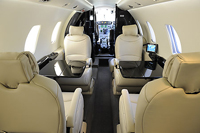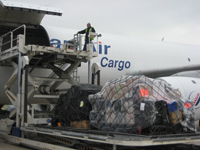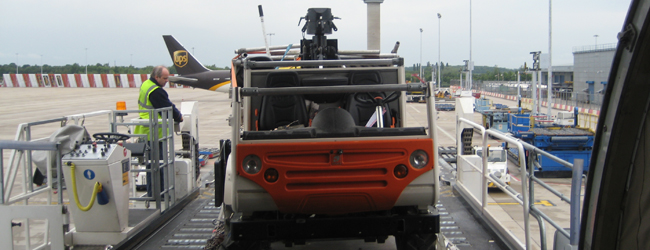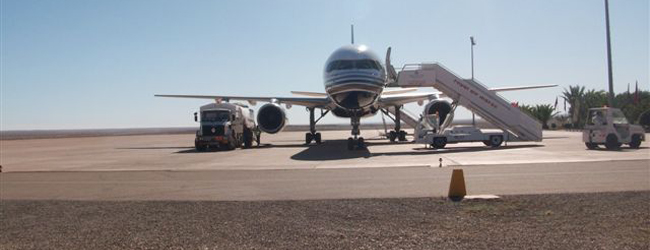Charter flights: Taking control the Hollywood way
When you charter an aircraft, whether it’s a helicopter, private jet or large commercial airliner, you call the shots. You can decide when you want to fly, where you want to fly to and you have the whole aircraft so that all your crew - and possibly equipment - can travel with security all together. Charter flights can often use smaller airports where scheduled services don’t go, and when time is money and you have to get a film crew to a different location in a short timeframe, you can choose your own travel schedule.
If you use an experienced charter broker such as CoolAir Charter, that understands the difficulties in arranging transport when filming schedules are changing daily, they will advise and organise everything and get the most suitable aircraft at the best price.
 Large passenger jets are suitable when you want to move a big film crew. Most holiday jets can accommodate large crews both with personal baggage and equipment. As you will be paying for the whole aircraft, excess baggage charges don’t apply. Equipment usually travels as cargo on the flight and will probably have to go through customs and security in a cargo warehouse. There’ll be a charge for the handling and loading of any cargo on top of the charter price.
Large passenger jets are suitable when you want to move a big film crew. Most holiday jets can accommodate large crews both with personal baggage and equipment. As you will be paying for the whole aircraft, excess baggage charges don’t apply. Equipment usually travels as cargo on the flight and will probably have to go through customs and security in a cargo warehouse. There’ll be a charge for the handling and loading of any cargo on top of the charter price.
Cargo is always carried subject to volume and film crews are famous for turning up on the day with at least a ton more than is expected, so it’s always useful to have a plan B, just in case it doesn’t all fit!
Several options can be investigated when you decide to charter. It may well be that you could use a smaller aircraft for the passengers and have a separate freighter purely for the equipment.
Private jets are all about privacy, security and luxury. Their passengers use VIP lounges instead of main passenger terminals at major airports, so discretion is assured.
Every detail will be considered, including comfort and catering whilst on board. A few years ago a luxury jet flew to Scotland from Switzerland to find a special blend of Scotch, just to keep their famous passenger happy.
All aircraft have insurance but most American film companies now ask that the production company names are added as named insured. This is usually done quite easily and without charge but do remember to leave plenty of time.
Production Co-ordinators need to have the following information when they ask for charter quotations:
Dates of travel;
Destination;
Rough timings;
Number of passengers;
An idea of the amount of equipment being taken;
A sense of the size of the travel budget.
 Don’t leave it until the last minute to confirm a flight as it takes a few days to organise insurance, charter agreements, payments and other paperwork. The further in advance this is done the less stress there will be, especially if the lawyers for the film company want contract clauses altered. All airlines require passenger lists with names, passport numbers and other information at least 48 hours prior to departure and they’ll need the cargo list too.
Don’t leave it until the last minute to confirm a flight as it takes a few days to organise insurance, charter agreements, payments and other paperwork. The further in advance this is done the less stress there will be, especially if the lawyers for the film company want contract clauses altered. All airlines require passenger lists with names, passport numbers and other information at least 48 hours prior to departure and they’ll need the cargo list too.
During the past few years CoolAir Charter has organised flights for many film crews to many places, including stunt horses to Bangkok, air taxis in the outback of Australia, and explosives and weapons for a war film in Morocco. Anything, anywhere is possible.
Related Posts
- Scouting across Canada’s Yukon with The Location Guide
- Location Report: Los Angeles
- The Location Guide talks to Lieutenant Colonel Glen Roberts, Director of the United States Air Force Entertainment Liaison Office
- Filming on location in Tanzania with Peter Jones
- On location with pan-USA Producer René Bastian of Belladonna Productions
- Staying grounded: Aircraft interiors for convenient location filming
- Aerial filming in the UK
- Interview with Kristy Liang, Entertainment, Film & Production Sales Manager at the Fairmont Hotel San Francisco
Related posts:
Comments
Not Logged in
You must be logged in to post a comment





There are 1 comments